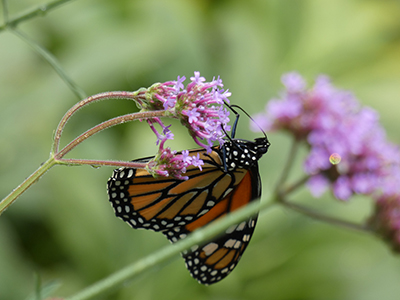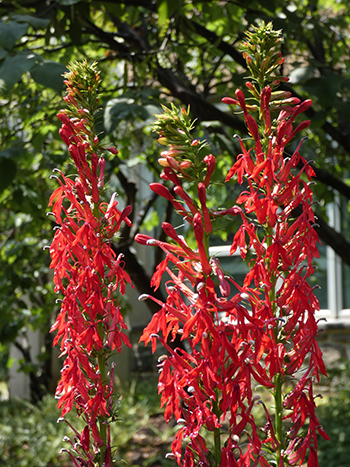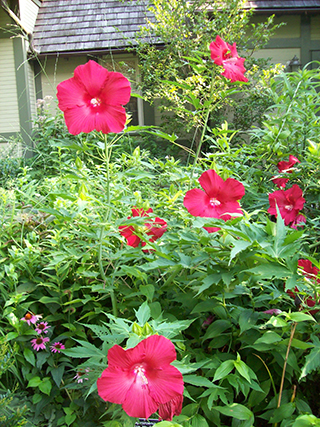
Plant of the Week: August 5
Guest Author: Rosemary Gorgan – 2019 summer intern

Verbena bonariensis
Verbena bonariensis (tall verbena) appears insignificant from far away, but its simplicity is what makes it interesting. The structure of the plant would remind you of a simple stick figure drawing. A long, upright stem branches into 3 separate stems which are each adorned with small bunches of lavender flowers. A few dark green, lance-shaped leaves can be seen on the plant’s upright stem. Verbena bonariensis is an herbaceous perennial that grows in clumps and blooms from June to frost. The flowers attract many pollinators, especially butterflies. Find small bunches of this plant by the Cunningham House driveway and behind the Wister Center.
Photo Credit: R.Grogan

Lobelia cardinalis
Lobelia cardinalis (cardinal flower) is a perennial native to Missouri where it grows near streams, sloughs, swamps and in low wooded areas. Lobelia cardinalis blooms in late summer from July to September. The plant has vibrant red flowers on upright stalks that usually reaches to 2 or 3 feet high. The bright red flowers attract hummingbirds and butterflies.
Lobelia cardinalis can be found in the Glade Garden near the Science Center among a multitude of other native plants. While you are there, you can examine the “water stairway,” where rain is captured from the roof and flows down to a catch basin. This was designed to manage stormwater runoff in accordance with LEED (Leadership in Energy and Environmental Design) building criteria.
Photo Credit: R.Grogan

Hibiscus ‘Lord Baltimore’
Between the Cunningham House and Wister Center you will find a patch of crimson Hibiscuses, which have the appeal of tropical flowering plants, but are less susceptible to cold temperatures. Hibiscus ‘Lord Baltimore’ is a hardy perennial that is upright and sometimes shruby. Robert Darby hybridized ‘Lord Baltimore’ from multiple hibiscus species from eastern U.S. wetlands, including H. coccineus, H. laevis, H. moscheutos, and H. palustris. Each flower blooms for only one day, but multiple flowers bloom during mid-summer to early fall, and occasionally up until the first frost. The plant has medium green, serrated leaves and a red tinted stem. It can spread from 2 to 3 feet, while vertical stems can reach up to 5 feet.
Photo Credit: J. Coceano





No Comments